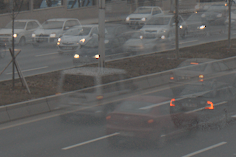The State of the Art in HDR Deghosting: A Survey and Evaluation
1Dept. of Comptuer Engineering, Middle East Technical University, Turkey
2Dept. of Comptuer Engineering, Hacettepe University, Turkey
2Dept. of Comptuer Engineering, Hacettepe University, Turkey
Abstract
Obtaining a high quality high dynamic range (HDR) image in the presence of camera and object movement has been a long-standing challenge. Many methods, known as HDR deghosting algorithms, have been developed over the past ten years to undertake this challenge. Each of these algorithms approaches the deghosting problem from a different perspective, providing solutions with different degrees of complexity, solutions that range from rudimentary heuristics to advanced computer vision techniques. The proposed solutions generally differ in two ways: (1) how to detect ghost regions and (2) what to do to eliminate ghosts. Some algorithms choose to completely discard moving objects giving rise to HDR images which only contain the static regions. Some other algorithms try to find the best image to use for each dynamic region. Yet others try to register moving objects from different images in the spirit of maximizing dynamic range in dynamic regions. Furthermore, each algorithm may introduce different types of artifacts as they aim to eliminate ghosts. These artifacts may come in the form of noise, broken objects, under- and over-exposed regions, and residual ghosting. Given the high volume of studies conducted in this field over the recent years, a comprehensive survey of the state of the art is required. Thus, the first goal of this paper is to provide this survey. Secondly, the large number of algorithms brings about the need to classify them. Thus the second goal of this paper is to propose a taxonomy of deghosting algorithms which can be used to group existing and future algorithms into meaningful classes. Thirdly, the existence of a large number of algorithms brings about the need to evaluate their effectiveness, as each new algorithm claims to outperform its precedents. Therefore, the last goal of this paper is to share the results of a subjective experiment which aims to evaluate various state-of-the-art deghosting algorithms.
Obtaining a high quality high dynamic range (HDR) image in the presence of camera and object movement has been a long-standing challenge. Many methods, known as HDR deghosting algorithms, have been developed over the past ten years to undertake this challenge. Each of these algorithms approaches the deghosting problem from a different perspective, providing solutions with different degrees of complexity, solutions that range from rudimentary heuristics to advanced computer vision techniques. The proposed solutions generally differ in two ways: (1) how to detect ghost regions and (2) what to do to eliminate ghosts. Some algorithms choose to completely discard moving objects giving rise to HDR images which only contain the static regions. Some other algorithms try to find the best image to use for each dynamic region. Yet others try to register moving objects from different images in the spirit of maximizing dynamic range in dynamic regions. Furthermore, each algorithm may introduce different types of artifacts as they aim to eliminate ghosts. These artifacts may come in the form of noise, broken objects, under- and over-exposed regions, and residual ghosting. Given the high volume of studies conducted in this field over the recent years, a comprehensive survey of the state of the art is required. Thus, the first goal of this paper is to provide this survey. Secondly, the large number of algorithms brings about the need to classify them. Thus the second goal of this paper is to propose a taxonomy of deghosting algorithms which can be used to group existing and future algorithms into meaningful classes. Thirdly, the existence of a large number of algorithms brings about the need to evaluate their effectiveness, as each new algorithm claims to outperform its precedents. Therefore, the last goal of this paper is to share the results of a subjective experiment which aims to evaluate various state-of-the-art deghosting algorithms.
| Link to PDF (Author's Copy) | BibTeX | Dataset Overview | Link to Dataset (ZIP ~1.6GB) | Source Code of SimpleDG (TAR.GZ ~12MB) |



